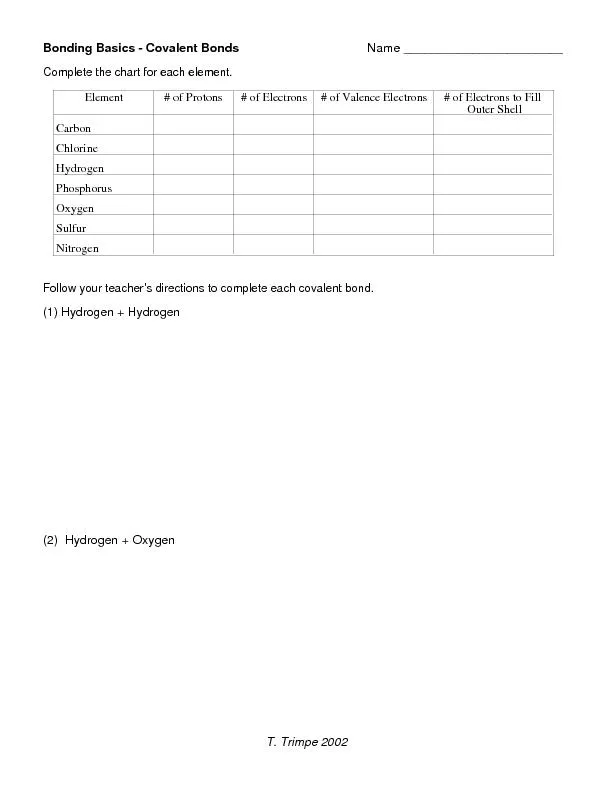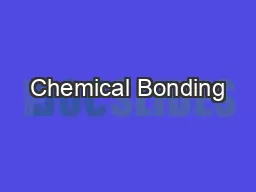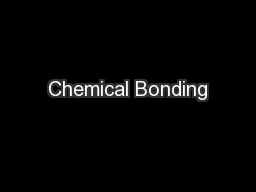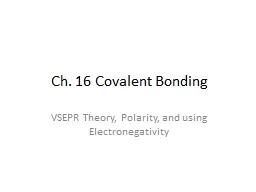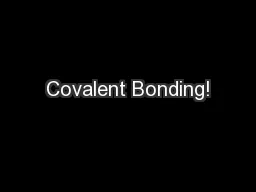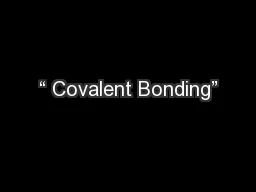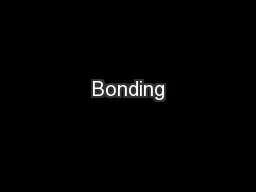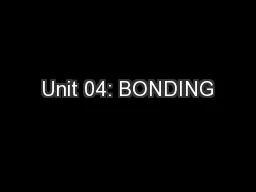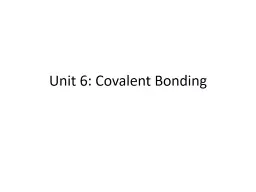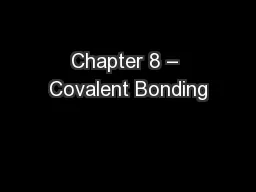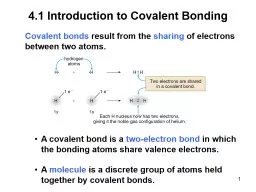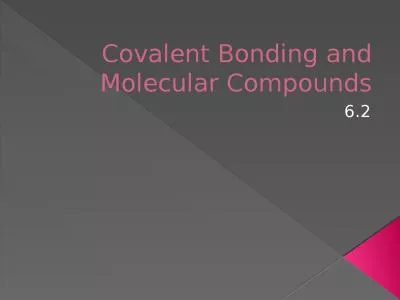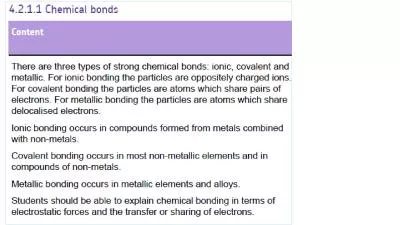PDF-Bonding Basics - Covalent BondsName _______________________Complete th
Author : marina-yarberry | Published Date : 2016-11-09
T Trimpe 2002 Element of Protons of Electrons of Valence Electrons of Electrons to Fill Outer Shell CarbonChlorineHydrogenPhosphorusOxygenSulfurNitrogen 3 Chlorine
Presentation Embed Code
Download Presentation
Download Presentation The PPT/PDF document "Bonding Basics - Covalent BondsName ____..." is the property of its rightful owner. Permission is granted to download and print the materials on this website for personal, non-commercial use only, and to display it on your personal computer provided you do not modify the materials and that you retain all copyright notices contained in the materials. By downloading content from our website, you accept the terms of this agreement.
Bonding Basics - Covalent BondsName _______________________Complete th: Transcript
T Trimpe 2002 Element of Protons of Electrons of Valence Electrons of Electrons to Fill Outer Shell CarbonChlorineHydrogenPhosphorusOxygenSulfurNitrogen 3 Chlorine Chlorine4 Oxygen O. and . Electronegativity. Presented by . Leticia Bonita Prince. Newcastle University 4. th. Year . MChem. Student. Aims of Today. Increase your understanding of bonding and electronegativity. Increase your spatial skills and awareness using software designed by the CCDC. Molecular Geometry. Ch. 6 Sections 1-4 Review. In general, what determines whether atoms will form chemical bonds?. Atoms will form a chemical bond if their potential energy is lowered in doing so.. Describe the difference between ionic and covalent bonding.. Introduction to Chemical Bonding. Introduction to Chemical Bonding. Objectives:. Define . chemical bond.. Explain why most atoms form chemical bonds.. Describe ionic and covalent bonding.. Explain why most chemical bonding is neither purely covalent nor purely ionic.. IB Topics 4 & 14. Text:. Ch 8 (all except sections 4,5 & 8). Ch 9.1 & 9.5. Ch 10.1-10.7. My Name is Bond. Chemical Bond. PART 5: Giant Covalent Structures, Metallic Bonding & Physical Properties. VSEPR Theory, Polarity, and using . Electronegativity. Covalent . Bonds. Forms when 2 atoms share a pair of valence e. -. A. Types of Covalent Bonds. 1. . Single Covalent Bond . – two atoms share . Co = Together. The Octet Rule. The octet rule says that all atoms want to have eight valence electrons, like the noble gases.. One way that atoms can follow the octet rule is by giving and taking electrons… ionic bonding. Ball-and-stick model. Molecular . Compounds. OBJECTIVES:. Distinguish. between the melting points and boiling points of . molecular. compounds and . ionic. compounds.. Molecular . Compounds. OBJECTIVES:. Chemical bonding. Chemical Bonding. Diamond. Silicon dioxide. Graphite. Ionic Bond / metallic bond / covalent bond. Nature of the bond. Physical properties . Melting point / boiling point. Electrical conductivity. IB Topics 4 & 14. Text:. Ch 8 (all except sections 4,5 & 8). Ch 9.1 & 9.5. Ch 10.1-10.7. My Name is Bond. Chemical Bond. PART 5: Giant Covalent Structures, Metallic Bonding & Physical Properties. Covalent Bonding. A . chemical bond . is the force that holds two atoms together and makes them function as a unit. Atoms form bonds to become most stable and obtain an octet. Covalent Bonding: Electrons are shared between two or more elements. Always between 2 non-metals. Jennie L. Borders. Section 8.1 – Molecular Compounds. A . covalent bond. is formed between atoms held together by . sharing. electrons.. A . molecule. is a group of atoms joined by . covalent bonds. Covalent bonds . result from the . sharing . of electrons. between two atoms.. A covalent bond is a . two-electron bond . in which the bonding atoms share valence electrons.. A . molecule . is a discrete group of atoms held together by covalent bonds.. 6.2. Molecules. Molecules – a neutral group of atoms held together by . covalent. bonds. Molecular compound – a . cmpd. whose simplest units are molecules. Chemical formula – indicates relative # of atoms of each kind in a chemical compound by using atomic symbols & subscripts. Ionic bonds form a . giant lattice structure. Sodium chloride is an ionic compound formed by the reaction between the metal sodium and the non-metal chlorine.. During the reaction, one electron is transferred from each sodium atom to each chlorine atom..
Download Document
Here is the link to download the presentation.
"Bonding Basics - Covalent BondsName _______________________Complete th"The content belongs to its owner. You may download and print it for personal use, without modification, and keep all copyright notices. By downloading, you agree to these terms.
Related Documents

